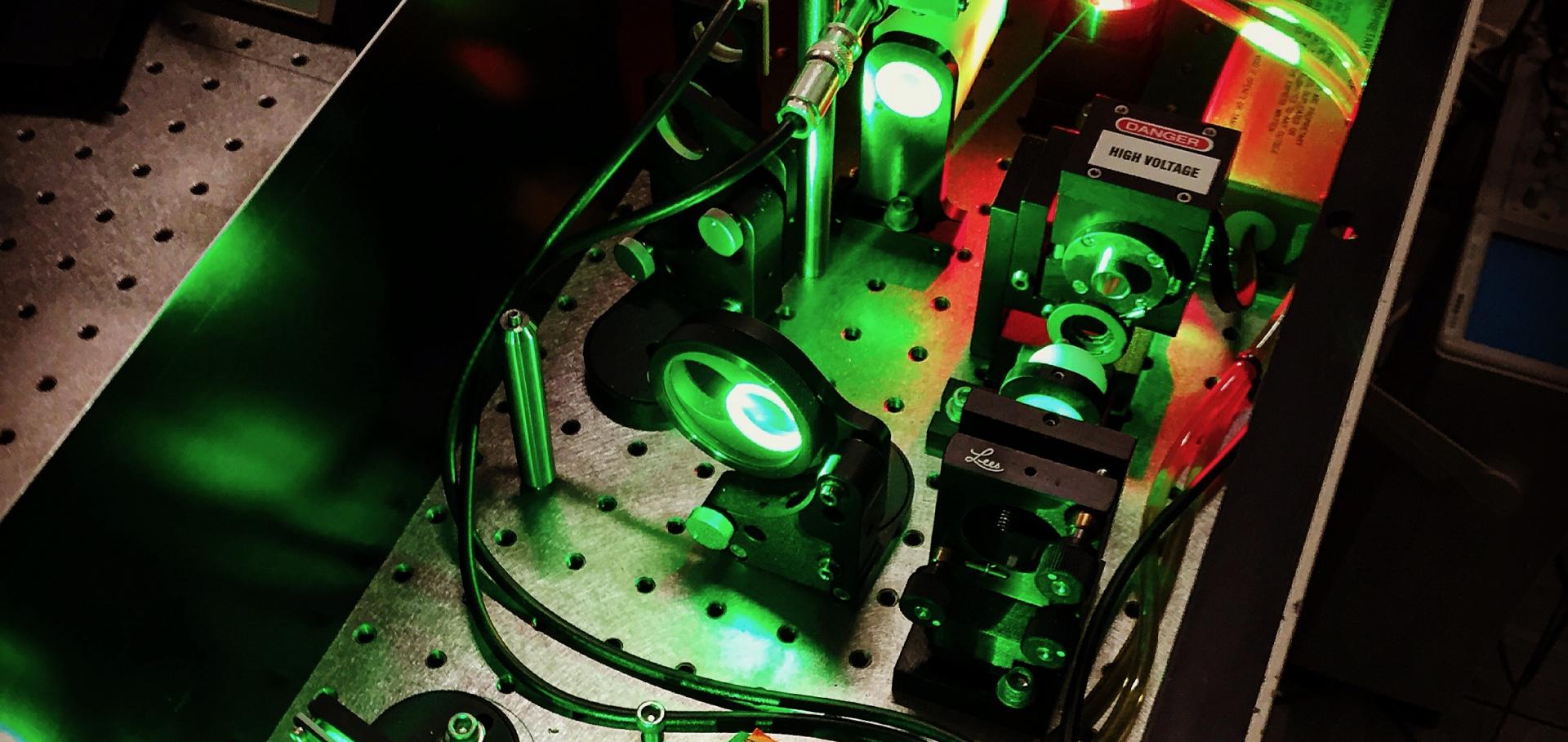Oriented naphthalene-O-propylammonium-based (NOP)4AuBIIII8 (B = Au, Bi, Sb) Ruddlesden–Popper two-dimensional gold double perovskite thin films featuring high charge-carrier mobility
Journal of the American Chemical Society American Chemical Society 147:20 (2025) 16992-17001
Abstract:
Two-dimensional perovskites show intriguing optoelectronic properties due to their anisotropic structure and multiple quantum well structure. Here, we report the first three gold-based Ruddlesden–Popper type two-dimensional double perovskites with a general formula (NOP)4AuIBIIII8 (B = Au, Bi, Sb) employing naphthalene-O-propylammonium (NOP) as an organic cation. They were found to form highly crystalline thin films on various substrates, predominantly oriented in the [001] direction featuring continuous, crack-free film areas on the μm2 scale. The thin films show strong optical absorption in the visible region, with band gap energies between 1.48 and 2.32 eV. Density functional theory calculations support the experimentally obtained band gap energies and predict high charge-carrier mobilities and effective charge separation. A comprehensive study with time-resolved microwave conductivity (TRMC) and optical-pump-THz-probe (OPTP) spectroscopy revealed high charge-carrier mobilities for lead-free two-dimensional perovskites of 4.0 ± 0.2 cm2(V s)−1 and charge-carrier lifetimes in the range of μs. Photoconductivity measurements under 1 sun illumination demonstrated the material’s application as a photodetector, showing a 2-fold increase in conductivity when exposed to light.Inter‐Layer Diffusion of Excitations in 2D Perovskites Revealed by Photoluminescence Reabsorption
Advanced Functional Materials Wiley (2025) 2421817
Abstract:
2D lead halide perovskites (2DPs) offer chemical compatibility with 3D perovskites and enhanced stability, which are attractive for applications in photovoltaic and light‐emitting devices. However, such lowered structural dimensionality causes increased excitonic effects and highly anisotropic charge‐carrier transport. Determining the diffusivity of excitations, in particular for out‐of‐plane or inter‐layer transport, is therefore crucial, yet challenging to achieve. Here, an effective method is demonstrated for monitoring inter‐layer diffusion of photoexcitations in (PEA)2PbI4 thin films by tracking time‐dependent changes in photoluminescence spectra induced by photon reabsorption effects. Selective photoexcitation from either substrate‐ or air‐side of the films reveals differences in diffusion dynamics encountered through the film profile. Time‐dependent diffusion coefficients are extracted from spectral dynamics through a 1D diffusion model coupled with an interference correction for refractive index variations arising from the strong excitonic resonance of 2DPs. Such analysis, together with structural probes, shows that minute misalignment of 2DPs planes occurs at distances far from the substrate, where efficient in‐plane transport consequently overshadows the less efficient out‐of‐plane transport in the direction perpendicular to the substrate. Through detailed analysis, a low out‐of‐plane excitation diffusion coefficient of (0.26 ± 0.03) ×10−4 cm2 s−1 is determined, consistent with a diffusion anisotropy of ≈4 orders of magnitude.Bandlike transport and charge-carrier dynamics in BiOI films
Journal of Physical Chemistry Letters American Chemical Society 14:29 (2023) 6620-6629
Abstract:
Following the emergence of lead halide perovskites (LHPs) as materials for efficient solar cells, research has progressed to explore stable, abundant, and nontoxic alternatives. However, the performance of such lead-free perovskite-inspired materials (PIMs) still lags significantly behind that of their LHP counterparts. For bismuth-based PIMs, one significant reason is a frequently observed ultrafast charge-carrier localization (or self-trapping), which imposes a fundamental limit on long-range mobility. Here we report the terahertz (THz) photoconductivity dynamics in thin films of BiOI and demonstrate a lack of such self-trapping, with good charge-carrier mobility, reaching ∼3 cm<sup>2</sup> V<sup>-1</sup> s<sup>-1</sup> at 295 K and increasing gradually to ∼13 cm<sup>2</sup> V<sup>-1</sup> s<sup>-1</sup> at 5 K, indicative of prevailing bandlike transport. Using a combination of transient photoluminescence and THz- and microwave-conductivity spectroscopy, we further investigate charge-carrier recombination processes, revealing charge-specific trapping of electrons at defects in BiOI over nanoseconds and low bimolecular band-to-band recombination. Subject to the development of passivation protocols, BiOI thus emerges as a superior light-harvesting semiconductor among the family of bismuth-based semiconductors.Exciton formation dynamics and band-like free charge-carrier transport in 2D metal halide perovskite semiconductors
Advanced Functional Materials Wiley 33:32 (2023) 2300363
Abstract:
Metal halide perovskite (MHP) semiconductors have driven a revolution in optoelectronic technologies over the last decade, in particular for high-efficiency photovoltaic applications. Low-dimensional MHPs presenting electronic confinement have promising additional prospects in light emission and quantum technologies. However, the optimisation of such applications requires a comprehensive understanding of the nature of charge carriers and their transport mechanisms. This study employs a combination of ultrafast optical and terahertz spectroscopy to investigate phonon energies, charge-carrier mobilities, and exciton formation in 2D (PEA)2PbI4 and (BA)2PbI4 (where PEA is phenylethylammonium and BA is butylammonium). Temperature-dependent measurements of free charge-carrier mobilities reveal band transport in these strongly confined semiconductors, with surprisingly high in-plane mobilities. Enhanced charge-phonon coupling is shown to reduce charge-carrier mobilities in (BA)2PbI4 with respect to (PEA)2PbI4. Exciton and free charge-carrier dynamics are disentangled by simultaneous monitoring of transient absorption and THz photoconductivity. A sustained free charge-carrier population is observed, surpassing the Saha equation predictions even at low temperature. These findings provide new insights into the temperature-dependent interplay of exciton and free-carrier populations in 2D MHPs. Furthermore, such sustained free charge-carrier population and high mobilities demonstrate the potential of these semiconductors for applications such as solar cells, transistors, and electrically driven light sources.Bending a Photonic Wire into Ring
University of Oxford (2022)


